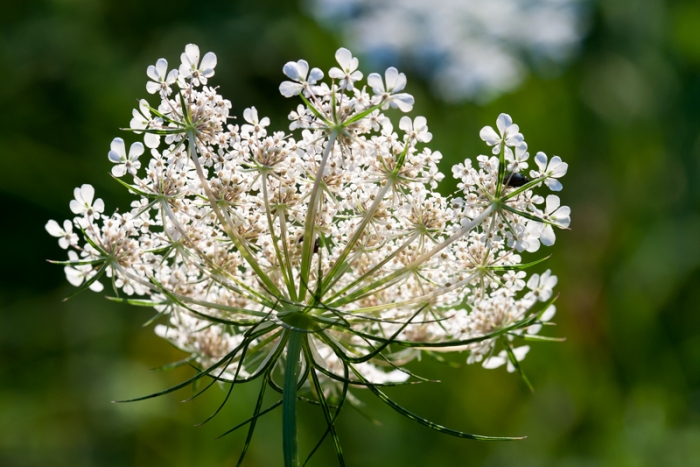Queen Anne’s Lace
(Daucus carota)
Queen Anne’s Lace (Daucus carota)
/
/

Betty Rembert
CC BY 3.0




























































Estimated Native Range
Summary
Queen Anne’s Lace is valued for its ornamental features, particularly its attractive flower heads that can add a delicate texture to garden borders and wildflower meadows. It is also used in dried flower arrangements. This plant is easy to grow and maintain, tolerating a range of soil conditions, though it prefers well-drained soils. It is drought-tolerant once established and can thrive in full sun to partial shade. However, gardeners should be cautious as Daucus carota can become invasive outside its native range, spreading rapidly and potentially outcompeting native flora.CC BY-SA 4.0
Plant Description
- Plant Type: Herb
- Height: 2-4 feet
- Width: 0.2-0.3 feet
- Growth Rate: Moderate
- Flower Color: White
- Flowering Season: Summer
- Leaf Retention: Deciduous
Growth Requirements
- Sun: Full Sun
- Water: Medium
- Drainage: Medium, Fast
Common Uses
Bee Garden, Bird Garden, Butterfly Garden, Drought Tolerant, Edible*Disclaimer: Easyscape's listed plant edibility is for informational use. Always verify the safety and proper identification of any plant before consumption., Erosion Control, Fragrant, Potted Plant
Natural Habitat
native to temperate regions of Europe, Africa, and Asia
Other Names
Common Names: Wild Carrot, Bird’s Nest, Bishop’s Lace, Gulerod, Wilde Möhre, Möhre, Porkkana, Carotte, Carotte Potagère, Carotte Sauvage
Scientific Names: , Daucus carota, Daucus carota var. carota, Daucus sativus, Daucus carota subsp. sativa, Daucus lucidus, Daucus maritimus, Daucus mauritanicus, Daucus polygamus, Daucus ceretanus
GBIF Accepted Name: Daucus carota L.